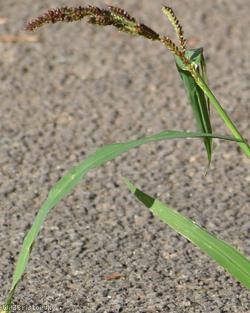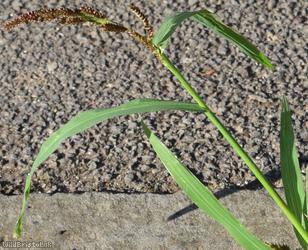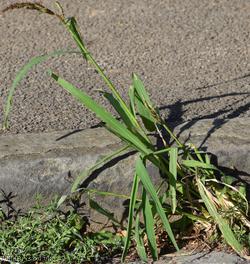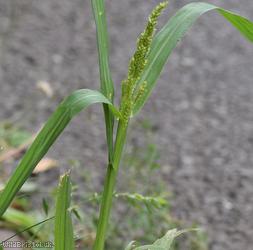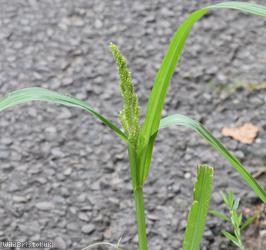Cockspur - Echinochloa crus-galli
Favourite Photos
Species Description
A widespread and fairly frequent birdseed, wool shoddy or soya-bean casual throughout the Southern half of the UK; less so in the North. Habitat includes: rubbish tips, wasteland, cultivated ground, game bird land etc. Growing habit: Annual. Height: Up to 1.5 m. Flowers: August to October. It has been known in Britain since at least 1690, but increased after the Second World War (when it was introduced with North American seed). Native to warm-temperate and tropical regions of Europe, Asia & North America. Other names include: Barnyard Grass, Common Barnyard-grass, Cockspur Grass, Barnyard Millet, Japanese Millet, Water Grass.
Stace 4:
Echinochloa crus-galli (L.) P. Beauv. - Cockspur.
Culms to 1.5m; leaves 1-3(8)cm wide; inflorescence ≤20cm, usually strongly purplish-tinged, the lower branches usually branched again (except in depaurperate material), all or most clearly separated; spikelets long-acuminate to long-awned; (2n=36, 42, 48, 54, 72). Neophyte-naturalised; casual mostly from birdseed, also from wool and soyabean and other sources, on tips, waysides and waste ground, also weed of cultivated ground sometimes naturalised there; scattered throughout most of British Isles, especially South, naturalised in South Britain and Channel Islands; tropics. E. microstachya (Wiegand) Rydb. (E. muricata (P. Beauv.) Fernald ssp. microstachya (Wiegand) Jauzein), differing in slightly shorter spikelets and different lemma apex shape, is sometimes segregated; some of our plants would belong here.
Key:
- Inflorescence with lateral spikes or racemes all or mostly clearly separate, obviously branched; lower floret male or sterile, its lemma awned or not
- Lower primary branches of inflorescence usually branched again; spikelets 2.5-4mm; lower floret usually sterile; lower lemma often awned (awn ≤5mm); leaves mostly >1cm wide
Useful Links:
Online Atlas of the British and Irish Flora
